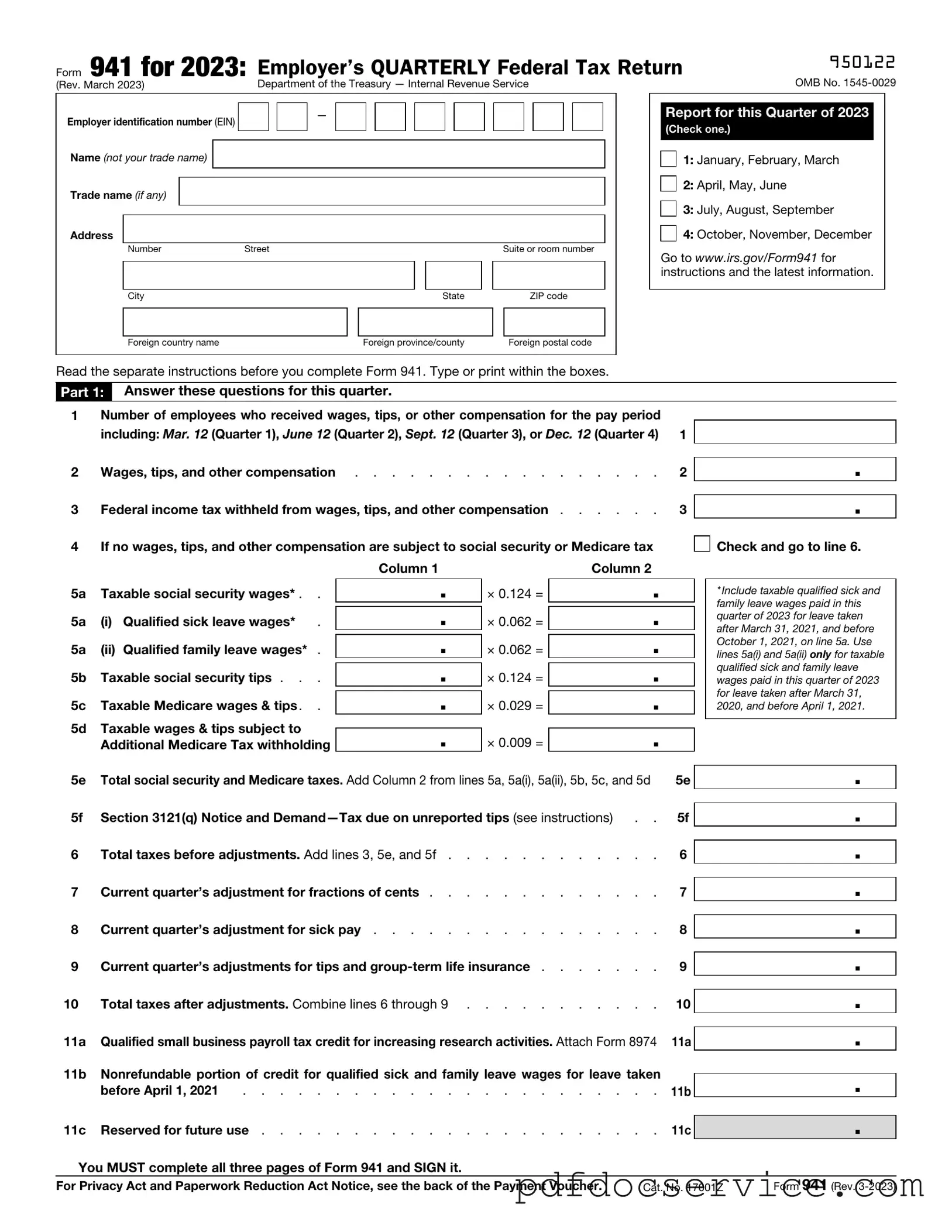IRS Form 941 is a quarterly tax form that employers use to report income taxes, Social Security tax, and Medicare tax withheld from employee wages. It also reports the employer's portion of Social Security and Medicare taxes. Employers must file this form for each quarter of the year.
Any employer who pays wages to employees must file Form 941. This includes businesses, non-profits, and government entities. If you have employees and withhold taxes from their paychecks, you are required to file this form.
Form 941 is due four times a year, specifically at the end of the month following the end of each quarter. The due dates are:
-
April 30 for the first quarter (January - March)
-
July 31 for the second quarter (April - June)
-
October 31 for the third quarter (July - September)
-
January 31 for the fourth quarter (October - December)
Employers can file Form 941 electronically or by mail. To file electronically, you can use the IRS e-file system or a third-party software provider. If you choose to file by mail, you should send the completed form to the address specified in the form instructions, based on your location.
To complete Form 941, you will need the following information:
-
Your business name and address
-
Your Employer Identification Number (EIN)
-
The total number of employees
-
The total wages paid
-
The amount of federal income tax withheld
-
The amounts for Social Security and Medicare taxes
If you miss the deadline for filing Form 941, you may face penalties and interest on any unpaid taxes. The IRS may impose a failure-to-file penalty and a failure-to-pay penalty. It is advisable to file the form as soon as possible, even if you cannot pay the full amount owed.
Yes, you can amend Form 941 if you discover an error after filing. To do this, you need to complete Form 941-X, Adjusted Employer’s QUARTERLY Federal Tax Return or Claim for Refund. This form allows you to correct any mistakes made on the original Form 941.
For more information about Form 941, you can visit the IRS website. The site provides detailed instructions, forms, and resources related to employer tax responsibilities. Additionally, consulting a tax professional can help clarify any specific questions you may have.
